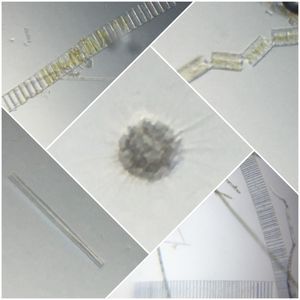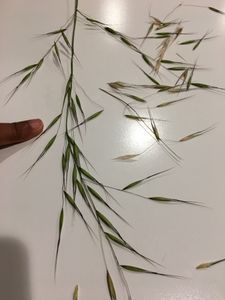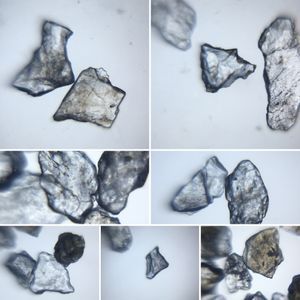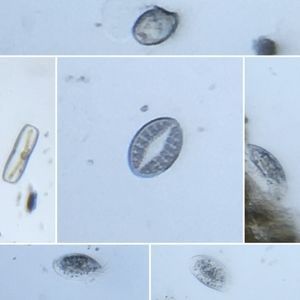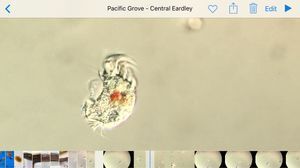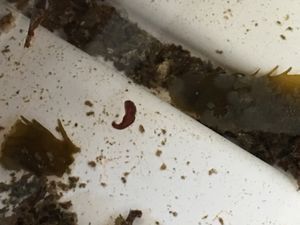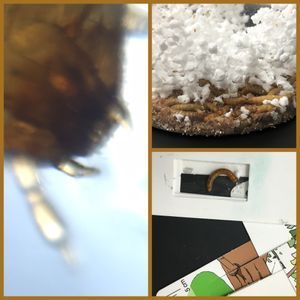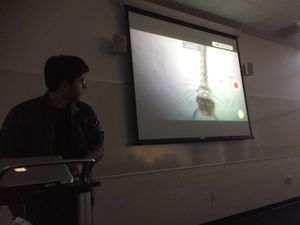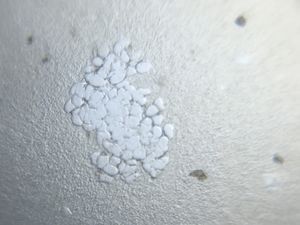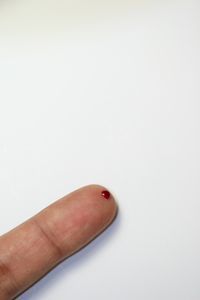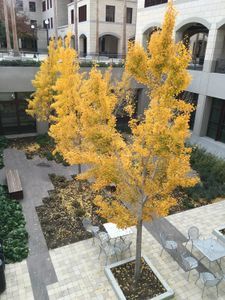Cheek cells.
 Mar 12, 2016 • 5:08 AM UTC
Mar 12, 2016 • 5:08 AM UTC Unknown Location
Unknown Location 140x Magnification
140x Magnification Unknown
Unknown
Saad Bhamla
Learn about the author...
32posts
11comments
2locations
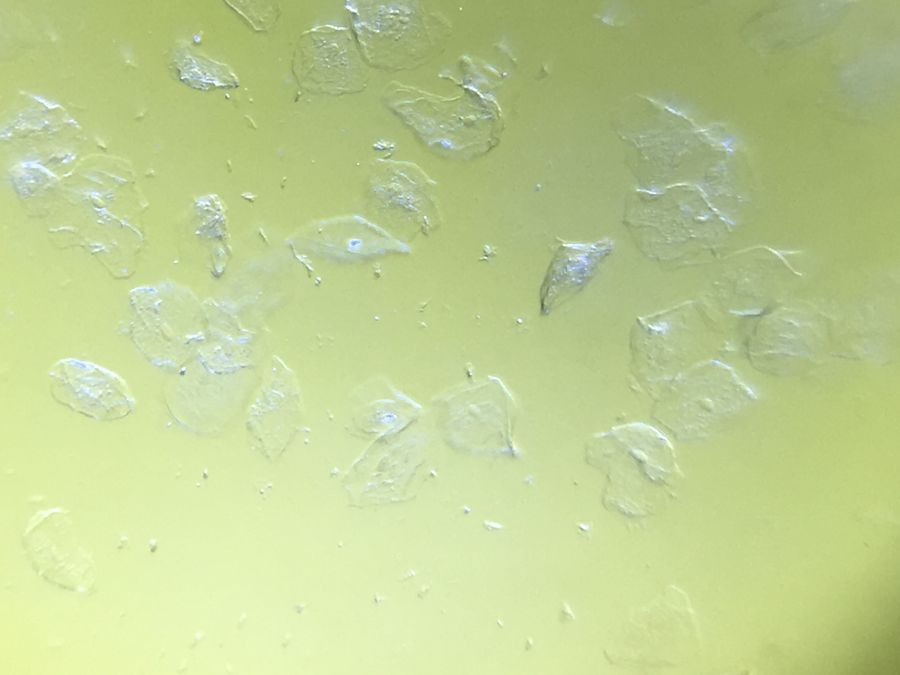
It’s always fun to revisit simple experiments and test it out with the foldscope. In this post, I wanted to see my own cheek cells. Now, if you search on the microcosmos website, you’ll come across many posts on cheek cells, but I hope to share one interesting insight, making the case that it’s worthwhile re-doing something others have done- you never know what you’ll find!

This experiment is very simple. Find a bamboo/plastic toothpick. Scrub your inner cheek for ~20 seconds. Rub the toothpick on a slide and cover with a cover-slip. Thats it!
Here’s the first thing I saw. Plenty of cheek cells!! Very clear and beautiful. If you look carefully, you should see the circular nucleus in the center.
Here’s the first thing I saw. Plenty of cheek cells!! Very clear and beautiful. If you look carefully, you should see the circular nucleus in the center.

Cheek cells – image 1
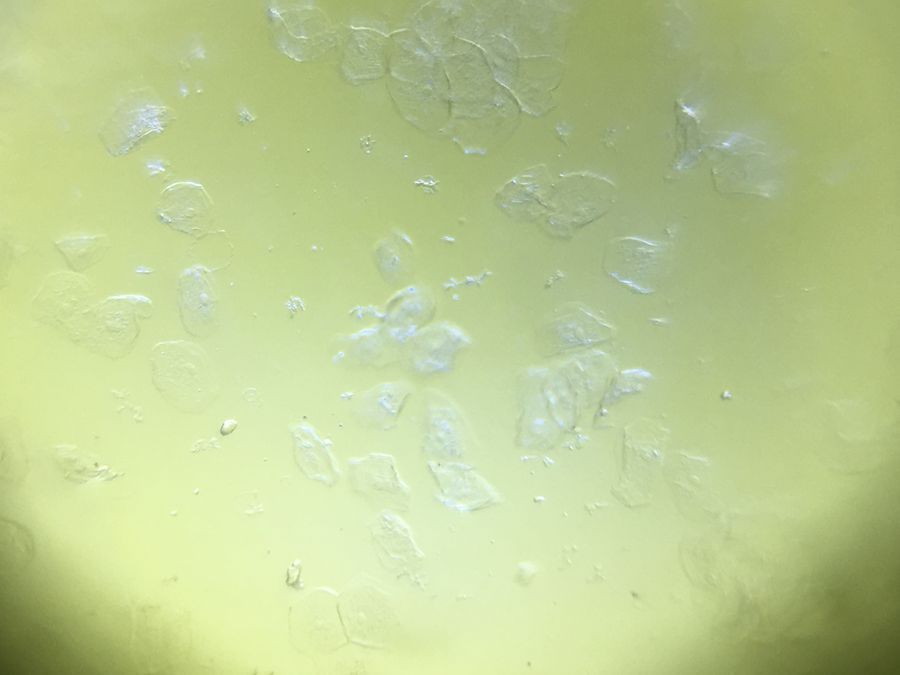
Cheek cells image 2 Now, here’s where it becomes interesting. Looking carefully, I could convince myself that the tiny ‘dots’ were actually bacteria – it wouldn’t be surprising – our mouths are filled with microorganisms. So, I decided to take some videos.
In this video, the first thing that amazed me was the large no. of cheek cells. I wonder if thats why a cheek swab is used to obtain dna for testing – there should be plenty of DNA to get a good read.
In this video, the first thing that amazed me was the large no. of cheek cells. I wonder if thats why a cheek swab is used to obtain dna for testing – there should be plenty of DNA to get a good read.
Here’s where I first observed a moving microorganisms. We thought its a bacteria – but I find it hard to believe. I wonder if its a Spirochaete? I know Manu has a post on them in his teeth scrapings..
Now Josh and I got pretty excited – in the next video, you can again make out moving tiny dots and rotating specks.
And this is the final longer video – I’ll leave it to you to find all the tiny moving bacteria in this video – and convince yourself that indeed, you’re mouth is teeming with all kinds of little creatures.
The point of this simple post is that many of you would have seen cheek cells in high school. However, I posit to you that doing it yourself is a rewarding exercise, specially with a foldscope. Even though you know what to expect, the foldscope lowers the discovery barrier in a marvelous way enabling you to make your own unexpected observations.
Last but not the least, cheek cells, and finding bacteria is also a simple experiment to practice your foldscoping skills. Because practice makes perfect!
DOI: 10.15200/winn.145806.65934 provided by The Winnower , a DIY scholarly publishing platform
Last but not the least, cheek cells, and finding bacteria is also a simple experiment to practice your foldscoping skills. Because practice makes perfect!
DOI: 10.15200/winn.145806.65934 provided by The Winnower , a DIY scholarly publishing platform
Sign in to commentNobody has commented yet... Share your thoughts with the author and start the discussion!

 0 Applause
0 Applause 0 Comments
0 Comments
